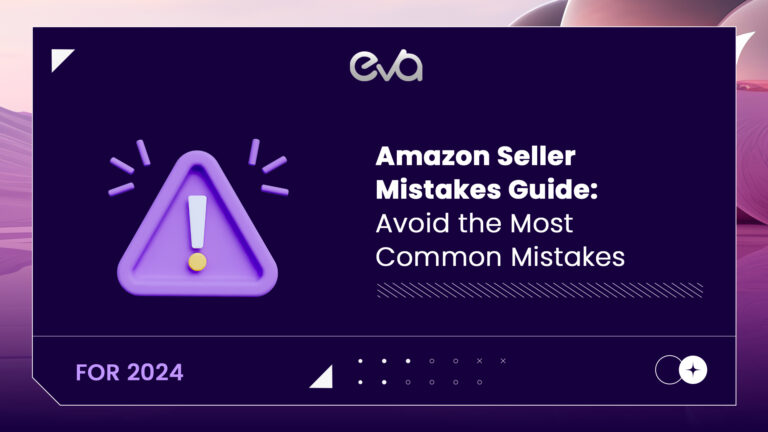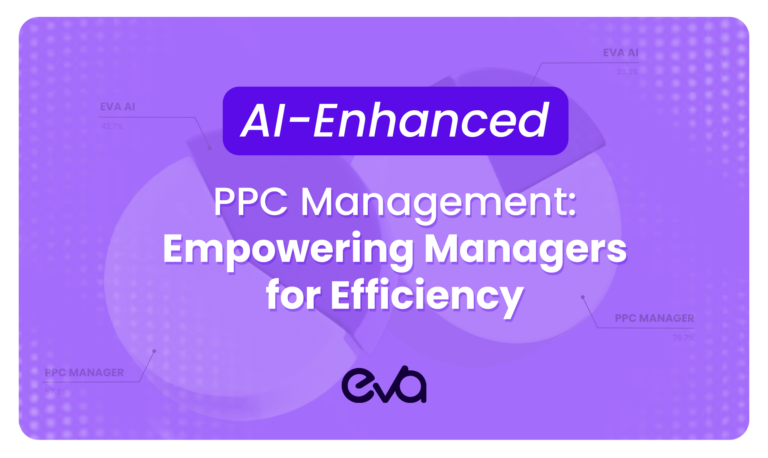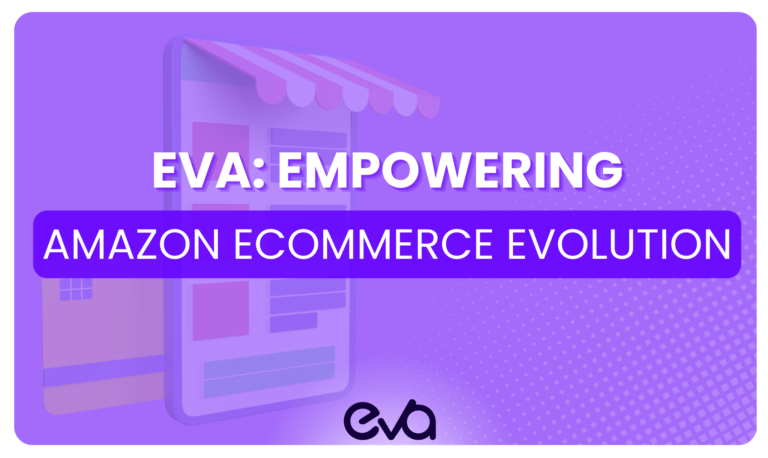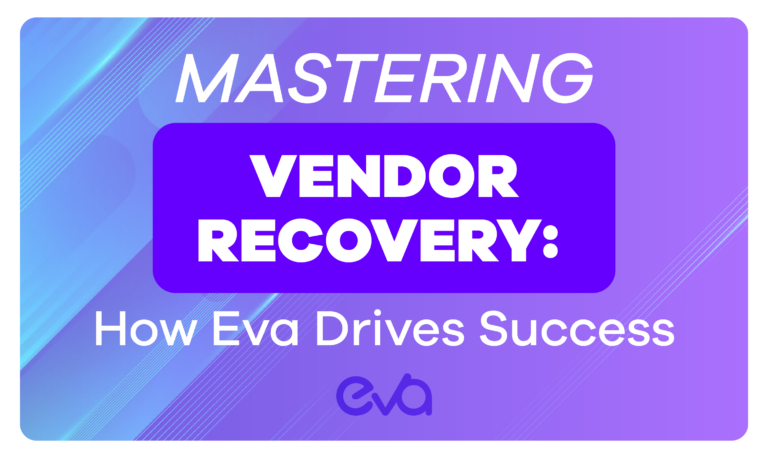Third-party logistics involves external organizations executing logistics functions. Traditionally, organizations perform these functions internally. 3PL functions encompass managing and moving resources to required areas.
The services provided by a 3PL company can include transportation, warehousing, picking and packing, inventory forecasting, order fulfillment, packaging, and freight forwarding.
Businesses often turn to 3PL providers to outsource elements of their distribution and fulfillment services. This can be due to a variety of reasons, such as the need to focus on core aspects of their business, lack of internal resources, or to gain more flexibility and scalability in logistics operations.
By using a 3PL provider, companies can potentially reduce costs, improve efficiency, and enhance customer service.
In this blog we will dive deep into the details on how you can benefit from these services the best.
Table of Contents
- Streamlining Business Focus
- Maximizing Efficiency
- Competitive Advantages and Flexible Delivery Options
- Data-Driven Technology
- More Satisfied Customers with Third-Party Logistics!
- Reverse Logistics, What Is It?
- Using Third-Party Logistics for Omnichannel Sales
- 3 Most Important Areas that Third-Party Logistics Cover For You
- What Part Does Third-Party Logistics Play in eCommerce?
- How Can I Find a Good 3PL Company?
- How Does a 3PL Supply Chain Become Profitable Over Time?
- Conclusion
Streamlining Business Focus
Because it takes time and resources from the company to plan this intricate but common business function of getting goods to customers, logistics can be a diversion from a company’s core business. Third-party logistics providers are experts in shipping, warehousing, and inventory control. They can concentrate on their areas of expertise while you concentrate on raising customer satisfaction while producing a high quality product. Your staff can focus more on ensuring customers receive high quality goods and excellent service when freed from having to deal with trucking companies and inventory tracking.
Maximizing Efficiency
Using economies of scale, third party logistics providers can deliver your products faster, reduce inventory with more frequent deliveries, and track inventory in warehouses more efficiently. Your business is no longer required to rent a warehouse and utilize only a portion of it or maintain insufficient inventory due to a lack of room. As your space needs change, a logistics provider bills you for the space you use while maintaining the right amount of inventory. When logistics are run more effectively, production is more dependable, and customer satisfaction is higher because customers receive their orders on time.
Competitive Advantages and Flexible Delivery Options
Third-party logistics providers now have more resources, allowing you to better assess how to satisfy your customers with higher service levels. Imagine you wanted to gain a competitive edge by utilizing next-day delivery. In that case, you could discuss the options and associated costs with your logistics provider, who is equipped to carry out such strategic plans. If you’d like to experiment with just-in-time delivery of the needed materials, your logistics provider can accommodate your requests. You can respond to changes in customer needs more quickly with a more adaptable supply chain, which increases customer satisfaction.
Data-Driven Technology
On both the supply and delivery sides of your operations, information technology enables the tracking of shipments, materials, and goods. Such systems are expensive to maintain and require technical personnel with specialized training. You can get information on the locations of crucial deliveries from third party logistics providers, which will help you plan your production more accurately.
Deliveries to customers can be tracked more effectively. The resultant streamlined operations enable prompt problem diagnosis and customer-satisfactory resolution while putting products in customers’ hands quickly and reliably.
More Satisfied Customers with Third-Party Logistics!
According to the 2017 Third-Party Logistics Study, 89% of shippers believe that using a 3PL enhances customer service. That level of assurance makes it obvious that a third-party logistics provider must provide a number of benefits, but what are they?
1. Professional service
Customers of today anticipate a seamless shopping experience, whether it be online, on a mobile device, etc. According to studies, 90% of consumers who interact with brands expect a consistent customer experience across channels and devices. Additionally, they want a selection of delivery and in-store pickup options.
You can deliver with the aid of a 3PL with an effective order management system (OMS). They can help you optimize your inventory so you can fill orders from various sources (DCs, stores, vendors). This makes it simpler to provide customer-friendly services like online ordering and buying online, picking up in-store.
Their familiarity with best practices and omnichannel experience also contribute to ensuring that your customers have the same experience whether they purchase in-person, online, or over the phone.
2. Increased order accuracy and visibility
Customers expect to know whether the products they want are available both online and in stores, as well as when they will receive them when they shop online. When a retailer’s website does not display the most recent product availability, 80% of customers are less likely to visit the physical location. When orders are delivered, customers anticipate getting the requested item, quantity, and color. That is not an excessive request.
Here too, a 3PL can be useful. They will be able to give you accurate, up-to-date inventory information with an OMS so you can see what is in stock, what is on backorder, etc. Additionally, they will have the most recent order status and tracking data.
A 3PL that prioritizes quality will give careful consideration to solution design and incorporate tried-and-true procedures to help guarantee order accuracy. So that your service level keeps improving, they will use methodologies like Lean and Six Sigma to find opportunities for improvement.
3. Cost-effective, quick deliveries
It goes without saying that today’s consumers want their goods quickly and affordably. According to a recent Deloitte study, nearly 90% of consumers believe that free shipping is even more crucial than fast shipping, but only 35% and 35%, respectively, will wait three to four days for their orders to arrive.
How can your 3PL facilitate such a quick turnaround? They will be able to process orders more quickly and find the fulfillment source that is closest to the customer for quick delivery with the aid of their trusted OMS. Additionally, they are probably equipped with material handling machinery and automation systems that can speed up order turnaround times.
Especially if you use multiple DCs, your 3PL probably also has a network of strategically placed facilities that can put your products within a simple, two-day ship time from your customers using less expensive ground service. Their negotiating power and well-established carrier network will give them the freedom to choose the best mode and level of service for each shipment. By negotiating prices, pooling parcel deliveries, and utilizing postal work-share options like presorting and drop-shipping, they can also help you save on outbound freight costs.
4. Individualization
One of the biggest benefits of today is personalization. Customers want to personalize their purchases, whether through embroidery, engraving, or specialty packaging and gift wrapping. Delivering on your promises will probably boost sales, foster customer loyalty, and help you stand out in the crowd. These kinds of unique touches can be time-consuming, though. This is yet another excellent chance to use your 3PL.
Your third-party provider can assist you in expanding your product offerings without carrying an excessive amount of inventory thanks to a wide range of value-added services. A 3PL can put off product configuration until the very last minute thanks to their flexible space and labor, which enables you to better meet customer demand. Facilities that are well-placed can also move these services closer to the client to speed up the process.
5. Prompt service
Customers demand excellent service. According to a Spark response study, 65% of consumers have severed ties with a brand following a single negative consumer experience. You need all the assistance you can get under that kind of performance pressure.
A 3PL can be a helpful partner. Even during busy shopping seasons like Black Friday and Cyber Monday, their vast resources (including space, labor, technology, and locations) will give you more flexibility to handle an increase in order volume without losing a beat. To handle customer issues more quickly and streamline returns, they might provide a call center. As part of their dedication to quality management, they will constantly seek out fresh approaches to enhance operations and satisfy your clients.
Reverse Logistics, What Is It?
More shippers are outsourcing their supply chain to third-party logistics firms as hassle-free shipping services become an integral part of the purchasing experience for customers. The flexibility and scalability of 3PLs are well known; these qualities are essential in today’s e-commerce, especially concerning product returns. Learn how outsourcing reverse logistics functions can benefit your business as it affects everything from budget spending to sustainability:
The phrase “last-mile delivery” is frequently used when discussing supply chain solutions. However, the supply chain is cyclical, as we all know. Services involving the transportation, repurposing, and disposal of goods are all included in reverse logistics. Processes that take place after the customer receives the product, you know. Think:
- faulty products
- Recalls of products
- return of a warranty
- Items returned
- Reusable packaging/containers
- Useful products
- Seasonal products
- hazardous substance
The Reverse Logistics Process
Customer Support:
This is the first step in reverse logistics, including customer support over the phone, by email, through online chat, and in other ways. The intention is to maintain open lines of communication for clients who might want to repair or return the faulty item they have purchased.
Receiving the Product:
Either the retailer will accept defective products returned by customers, or the manufacturer will recall any defective products (via its retailers). The customer has three options for returning the item: personally, jointly with someone else, or by mail. Sometimes manufacturers or retailers will also pick up the product from the customer.
Product transportation involves returning the recalled or returned goods to the manufacturer. This could require just one step (from the retailer to the manufacturer) or several steps (retailer to the dealer, distributor to the manufacturer). The mode of transportation may be land, air, or sea, depending on the kind, weight, and distance of the item to be transported.
The product is tagged, tracked, and stored in a warehouse with other returned goods after it has reached the manufacturer’s facility. A warehouse is a sizable storage area frequently furnished with tools for tagging and tracking the items kept there.
Sorting the Products:
The products are sorted or triaged depending on their condition and quality (to use the correct term). The appropriate department receives products that can be repaired and repairs them. Unrepairable goods are sold at a much lower price than defective goods or scrapped.
Repair:
If a product that has been returned is determined to be in good enough condition for repair, it is fixed and either sent back to the customer or sent back to be sold to another customer. Products are occasionally refurbished and sold at significant markups, bringing the manufacturer a profit.
Many manufacturers contract out their reverse logistics to third-party logistics companies that receive customer-returned goods, repair and refurbish them, and then resell them at deep discounts. The refurbished product is frequently sold by third parties at a higher markup than the original markup, making a sizable profit.
Using Third-Party Logistics for Omnichannel Sales
Both B2B and B2C fulfillment have very different needs, volumes, levels of predictability, and levels of urgency. Instead of developing a master fulfillment strategy for various sales channels, many businesses keep these operations separate, with various distribution structures and strategies.
This is incorrect. Today’s world is multi-channel. For all of your sales channels, you need a unified distribution strategy that concentrates on managing the “three I’s” of inventory, infrastructure, and information if you want to be profitable in this world.
Differences between B2B and B2C
The volume, predictability, urgency, and demand requirements for B2B and B2C operations vary. With a high frequency of similar orders handled daily or multiple times daily, B2B fulfillment is highly predictable. To reduce inventory, cut costs, and implement customization and special projects as needed, B2B operations turn to 3PL providers. Due to the business’s focus on volume, less labor is required for each saleable unit. The fact that B2B customers are professionals who buy and sell things dictates that every fulfillment step must be carried out perfectly.
B2C fulfillment is less predictable because it fluctuates with consumer behavior. Due to the need for picking and packing each individual customer order rather than picking pallets for retail replenishment, there is more 3PL labor required per saleable unit. Successful 3PL partners can navigate the volatile demand, irregular activity, and volume spikes inherent in B2C operations.
Using One 3PL to Handle Multiple Sales Channels at Once
Despite these variations, many 3PLs can work together to serve various channels through a single, well-coordinated fulfillment strategy. How? They must first have the room, personnel, skills, and capacity to manage each channel separately. Then, handling both simultaneously can be as simple as combining both operations into a single, massively coordinated operation. That is only possible if the foundation is set up correctly from the beginning.
Whether B2B, B2C, or both, the success or failure of these fulfillment operations largely depends on the service level agreements (SLAs) established at the very beginning of the relationship. The level of service expectations for quality, throughput, timeliness, execution, inventory, receipt, shipping, and other fulfillment components are clearly understood by SLAs. SLAs allow all parties to proactively manage the fulfillment operation while defining roles and evaluating performance.
The 3PL can then start working on optimizing your inventory, infrastructure, and information once the foundation has been laid.
3 Most Important Areas that Third-Party Logistics Cover For You
Inventory
The amount of inventory needed throughout your distribution network decreases by storing the inventory for all your sales channels together. Assume you maintain separate channels and store your B2C inventory in three locations and your B2B inventory in three additional locations. There are six different places where you must maintain inventory, which necessitates more stock to maintain an adequate supply, raising costs and raising the possibility of being left with unsold goods.
You could use various inventory management systems and different teams to carry out your SLAs with this “separated” model.
If you consolidate inventory at three 3PL locations, you streamline operations. This consolidation reduces inventory needs, staff numbers, and unifies inventory management across the nation.
Working with a 3PL allows you to pinpoint product needs per channel, location, and timing. This is based on sales forecasts and historical data. The 3PL partner should provide timely, accurate reports on orders and fulfillment. These reports help maintain optimal inventory and labor levels.
Infrastructure
You can fulfill B2B and B2C orders from the same warehouses and inventory pool thanks to a partnership with a skilled 3PL. The stock is physically separated into areas in the same warehouse, with the bulk replenishment area housing most of the stock. An individual warehouse management system (WMS) directs products into two forward-pick areas as forecasts determine future demand and actual orders.
With this strategy, you can maintain just the right amount of inventory to satisfy demand across all sales channels. A nationwide network of facilities managed on a single system for network-wide visibility characterizes a 3PL well suited to this strategy. You can meet strict delivery requirements for customer orders using such a network while also minimizing freight costs.
Information
By partnering with a 3PL for fulfillment across sales channels, you gain a unified system. This system offers complete visibility of your supply chain. You get real-time data on inventory, orders, and shipping. This information helps both you and the 3PL make proactive decisions. It also keeps your customers informed. Moreover, this approach prepares you for a future shift. Retail stores will become satellite distribution centers (DCs). They will ship orders to local customers or hold them for in-store pickup.
Look for the following when selecting a partner to support multiple sales channels:
- strong background in direct-to-consumer fulfillment and retail replenishment
- National fulfillment facilities are all controlled by a single system for network visibility
- Solutions that are specifically tailored to meet your needs
Today’s consumers anticipate being able to purchase anything they want through any channel they choose. Don’t let that, however, affect how effectively your fulfillment network operates. Create a multi-channel fulfillment strategy that makes your fulfillment processes simpler and more efficient.
What Part Does Third-Party Logistics Play in eCommerce?
Supply chains are becoming more complicated in the world of eCommerce today. Third-party logistics (3PL) play a role in this. In general, a 3PL can handle anything that needs to be done to move a product from Point A to Point B. Thus, 3PLs are essential to the supply chain for online retailers. They assist companies in contracting out their logistics requirements to concentrate on other activities, such as product sales and client relations.
Amazon is the ideal illustration of a business that successfully utilizes 3PLs. By using 3PLs to manage its supply chain requirements, Amazon has grown into a sizable company. Don’t undervalue the part that 3PLs can play in your success if you’re in the eCommerce industry.
How Can I Find a Good 3PL Company?
Having a strong supply chain is crucial if you work in the eCommerce industry. Finding a reliable 3PL business is also essential for success if you sell on Amazon. But how do you locate a reliable 3PL firm for your Amazon business?
When picking a 3PL company, there are some things to keep an eye out for. Initially, confirm that they have prior Amazon business experience. Check their references and reviews next. Third, find out whom other Amazon sellers use by talking to them and finding out what 3PL services they need.
Compare prices and services once you’ve narrowed your search to a few viable choices. Make sure you are aware of the costs each company charges. Also, make sure to enquire about issues like customer service and shipping times. You can discover the ideal 3PL provider for your Amazon business by conducting research.
How Does a 3PL Supply Chain Become Profitable Over Time?
A supply chain’s strength is vital, and for many companies, logistics is the challenging part. However, third-party logistics (3PL) offers a promising solution. 3PL companies, specializing in supply chain management, bring numerous advantages. These include cost savings, increased productivity, and greater flexibility. Furthermore, collaborating with a 3PL can be highly profitable for your Amazon business. It allows you to focus on what you do best: selling products. Meanwhile, you also benefit from reduced shipping and fulfillment expenses. Additionally, a dependable 3PL partner ensures your products always arrive on time and in perfect condition, offering you reassurance. Therefore, for expanding your Amazon business, seriously consider working with a 3PL provider.
Conclusion
In conclusion, third-party logistics (3PL) is essential for Amazon sellers. It simplifies logistics, allowing sellers to focus on their main business. This outsourcing saves costs and improves efficiency. It also boosts customer satisfaction. As e-commerce grows, using 3PL is vital for success. It helps sellers adapt to market changes and meet customer needs. Thus, 3PL is not just a trend, but key for growth in online retail









